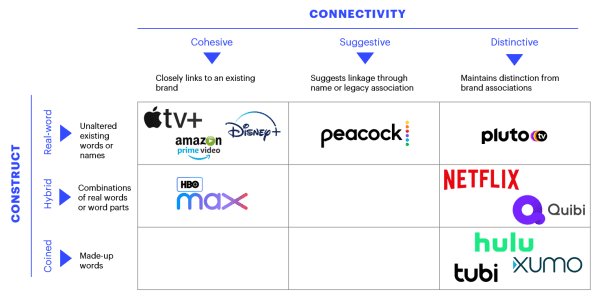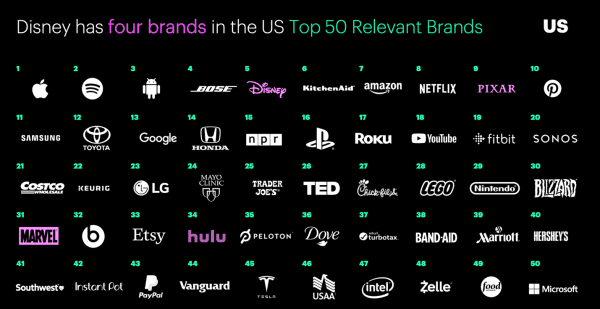BLOG
Five Enablers Accelerating Digital Transformation Today
Partnerships, 5G and contactless delivery can speed the pace of change.
The post-COVID-19 era provides a unique opportunity for companies to reimagine their businesses and accelerate digital transformation. In Asia in particular, companies were already prioritizing digital transformation companies – COVID-19 has sparked an acceleration and scaling of digital efforts as consumer behaviors evolve. According to a recent Prophet survey, acceleration of overall digital transformation is the second most impacted area for companies by COVID-19, following business continuity and employee safety.
In this article, we have identified five major enablers of digital transformation that businesses should consider and capture.
1. Accelerating 5G: Fueling Innovations & Greater Connectivity
The new normal has catalyzed the need for smarter and more integrated solutions, all of which demand greater connectivity enabled by 5G. The effects on businesses are far-reaching, changing the way we approach manufacturing, logistics, public security, healthcare, entertainment and more. We have seen many industries tapping into 5G to accelerate automation. For example, mining companies across Asia have deployed intelligent unmanned mining trucks to maintain productivity and safety during COVID-19.
5G also unlocks the potential for a seamless and immersive shopping experience, making the shopper’s journey more efficient and entertaining. Chinese e-commerce player JD (京东) accelerated the implementation of its automated logistics and delivery system during the pandemic. Packages were automatically sorted in their smart warehouses and delivered to shoppers via robots and drones 24 hours a day. Alibaba’s Tmall (天猫) launched a 3D virtual shopping experience at the 618 Shopping Festival. Over 100 brands have participated in the initiative, among which, IKEA has created a 1:1 virtual showroom, bringing its 3,000 sq m Shanghai store to consumers’ mobile phones.
As 5G is being more widely deployed in China and across Asia, companies have an opportunity to reimagine their businesses from both an operational and a customer experience standpoint.
2. Virtual Business: Digitally Enabled Selling and Customer Servicing
Consumers have become comfortable with going online to fulfill needs that are traditionally served in person. Seizing this opportunity, companies have to re-design their end-to-end customer experience to enable digital engagement from discovery and purchase to after-sales service to capture and retain these new ‘digital natives.’
Retail companies have to upskill their sales employees as they adapt and migrate their sales force online. Cosmo Lady (都市丽人), one of China’s largest underwear and lingerie companies, transformed its employees into a WeChat salesforce with the aim of achieving closer proximity to consumers.
Financial institutions are also evolving their traditional way of interacting with customers through digital tools. In May 2020, Citibank HK introduced its industry-first remote video insurance application service, where financial advisors can recommend and sell insurance products through virtual meetings.
Coming out of the COVID-19 crisis, many companies have an opportunity to rethink their selling and customer service processes to be far more digital and in tune with customers’ new expectations.
3. Unexpected Partnerships: Creating New Value for Consumers
Companies across industries have shown tremendous resourcefulness during the pandemic in creating new solutions through partnerships. To create new and integrated customer experiences, they looked beyond ancillary partnerships to combine capabilities, resources and technologies in innovative ways.
Global FMCG giants are exploring partnerships across industries to create new offerings, especially when traditional channels are faltering. In India, P&G partnered with Swiggy, a food delivery app, to deliver essential household products to consumers, in the absence of a delivery supply chain.
Companies are also sharing their consumer ecosystem as a new media platform to amplify their reach to a broader audience. Back in March this year, H&M granted the Red Cross access to its official Instagram account to spread health and safety messages to the brand’s 120 million followers, compared to the health organization’s 300,000 followers.
Companies that are constantly seeking out new ways to create value through various resources and capabilities will be the leaders of tomorrow.
4. Data Exchange Unlocked: Mainstream Acceptance
Big data has been an invaluable tool for companies to identify and respond to consumer needs in creative and agile ways. While privacy concerns have always been a sensitive issue, the pandemic has made consumers become more comfortable with sharing data and having it tracked across platforms, in exchange for safety, health, transparency and efficiency. The many success stories of government-led, data-driven contact-tracing programs implemented in South Korea, Singapore and China, have shifted consumers’ perceptions and opened up their minds to what is acceptable.
But there is a caveat. Consumers now hold even higher expectations for the value they get in return from the data they share. Therefore, companies must find ways to deliver greater value in exchange for more data. For example, gaming hardware company Razer is giving out free surgical face masks to every adult Singaporean. In exchange, consumers are required to download the Razer Pay app and register their personal info for verification.
In the world of finance, global financial institutions are creating new, appealing offers in exchange for customers’ personal data. DBS Bank in Singapore launched a 30-day free COVID-19 relief insurance for its customers. To enjoy the free coverage, customers needed to provide information about their demographics, finance and health. DBS saw 52,000 sign-ups within a day, showing that customers are willing to share data in exchange for the desired value.
Thinking of the post-COVID-19 era, companies need to reconsider how they access and collect data and whether value they provide in exchange makes it worthwhile and acceptable to customers.
5. Contactless Economy: A New Mindset Towards Customer Experience
For years, advances in digital technology have been raising the expectations for convenience. But in a post-COVID-19 world, convenience is no longer simply about speed or being frictionless, it is also about being contactless – eliminating the need for any human contact or interaction.
Prominent service providers in Southeast Asia like Gojek and Grab, have become a critical node for the e-commerce business during COVID-19 as consumers opt for contactless delivery due to health and safety concerns. Hotels and restaurants that were previously shielded away from a direct-to-consumer delivery service are now partnering with Gojek and Grab to sustain their business.
The new normal consumers have embraced the contactless experience and are expecting more value beyond safety and hygiene. To respond to these needs, global retailers are investing in technology to deliver superior experiences. To address the frequent issue of buying the wrong shoe size online, Nike introduced the app Nike Fit for customers to find the right size by scanning their feet, eliminating the need to go to a physical store.
There is a new mandate for businesses to adopt a ‘contactless mindset’ and to rethink their operations and customer experiences, even after the pandemic is over.
“The post-COVID-19 era provides a unique opportunity for companies to reimagine their businesses and accelerate digital transformation.”
FINAL THOUGHTS
There is no doubt that businesses will have to stay digitally agile in this new normal. By understanding these important enablers that have come to shape digital transformation, business leaders can identify new opportunities and map out their next growth moves.
What to do next to spark uncommon growth in the new normal? Stay tuned for the final part of our series, in which we will discuss the distinct patterns emerging across industries and the unique opportunities for businesses to accelerate their digital transformation agenda.
Download the full PDF report here, or read the first part of the series, where we explored the new consumer perspectives and habits to have emerged in the post-COVID-19 era.
Connect to learn more about what levers you can pull to reimagine your business for uncommon growth in the post-COVID-19 era.

















